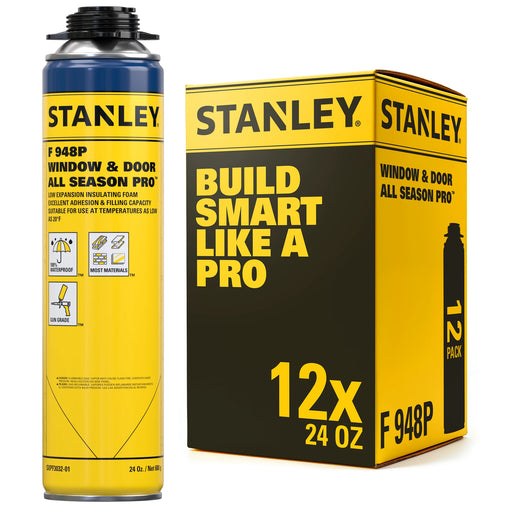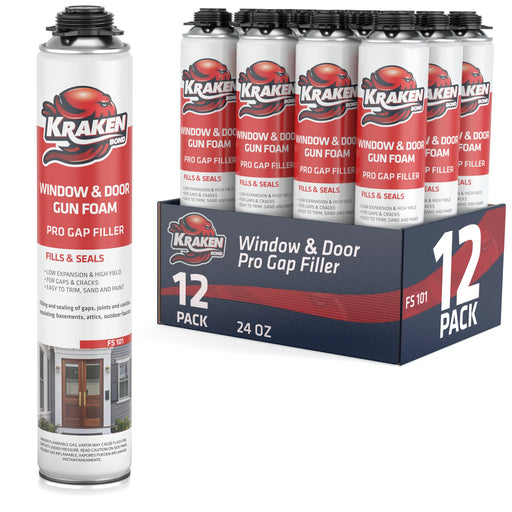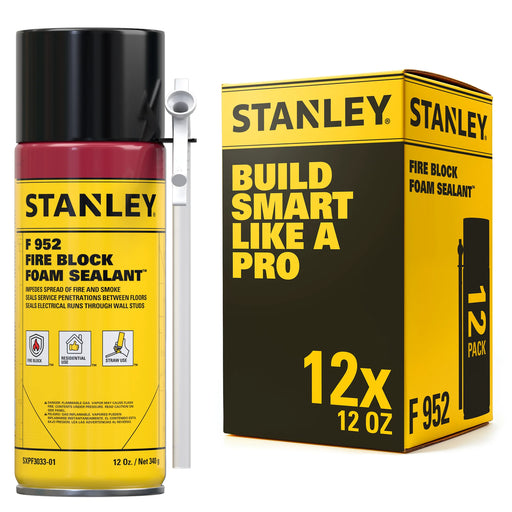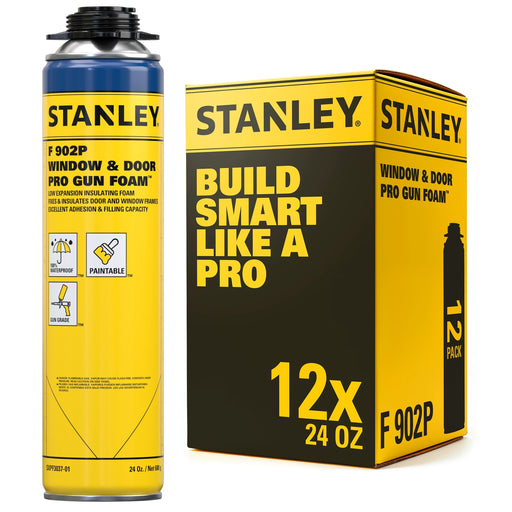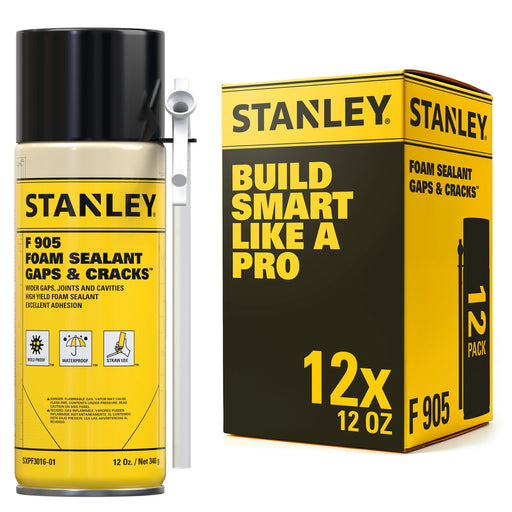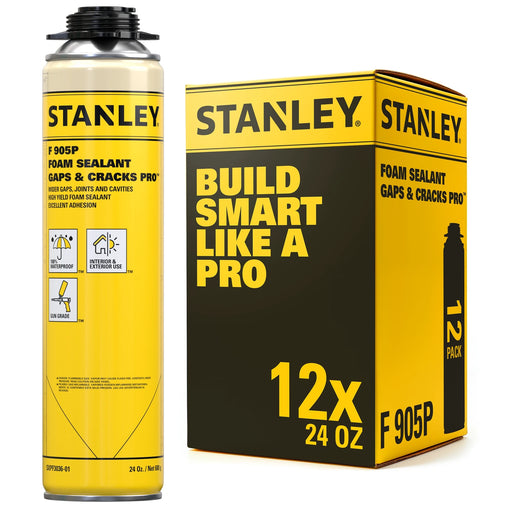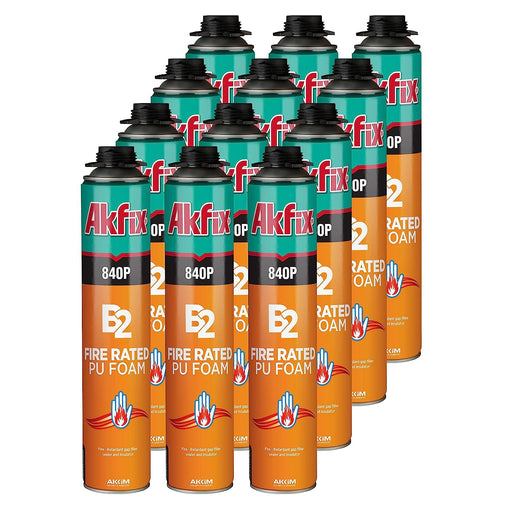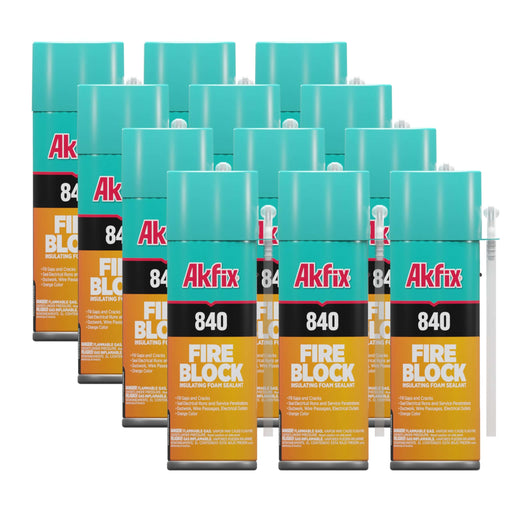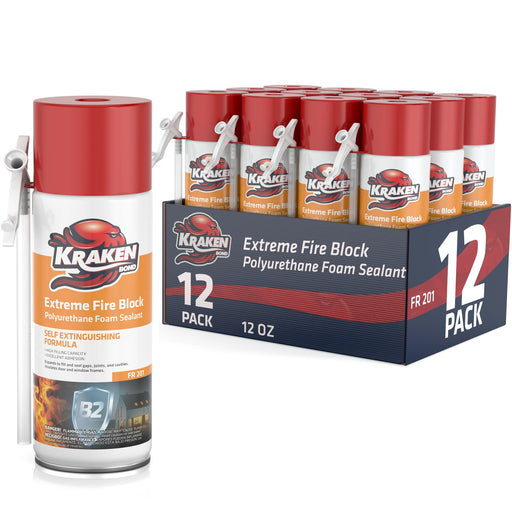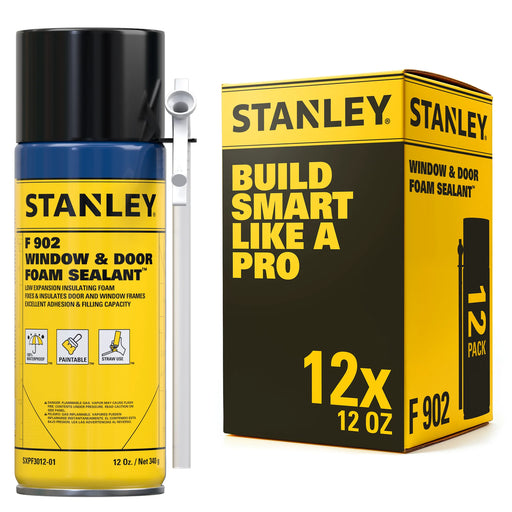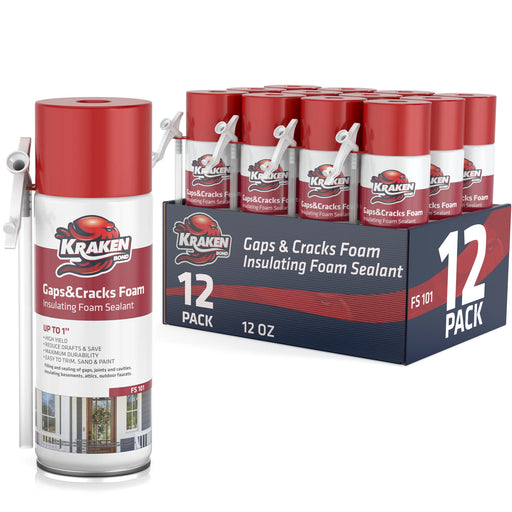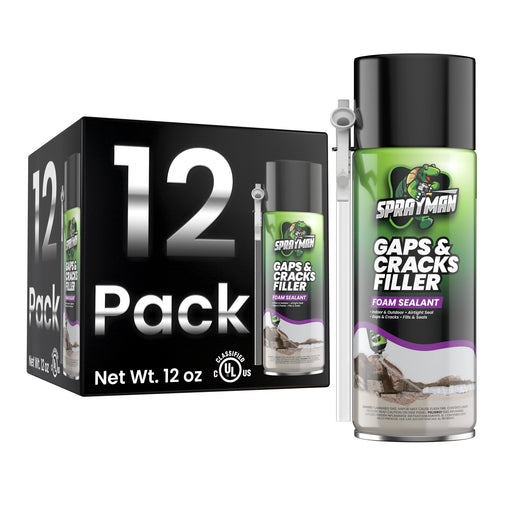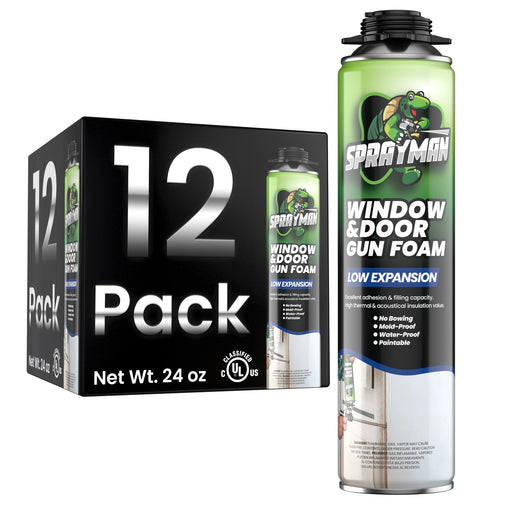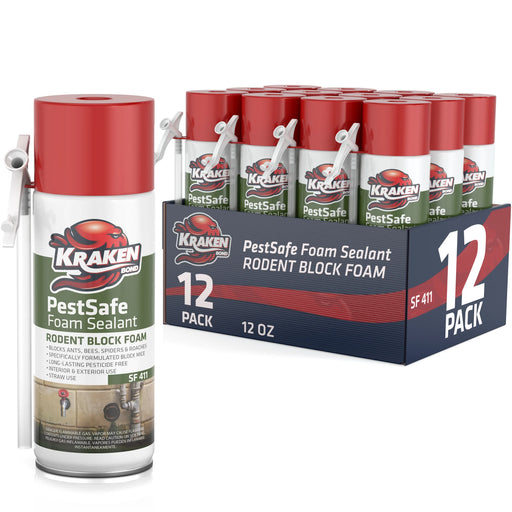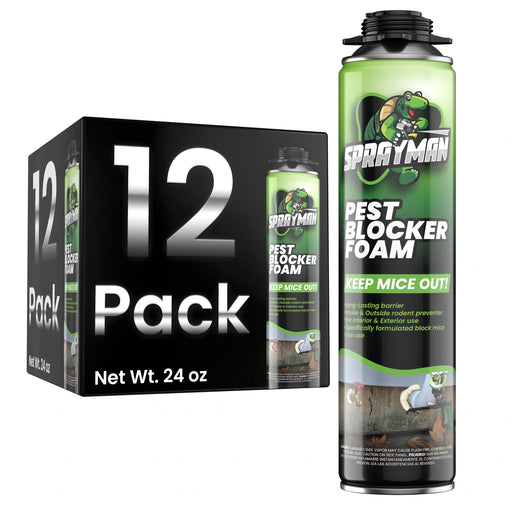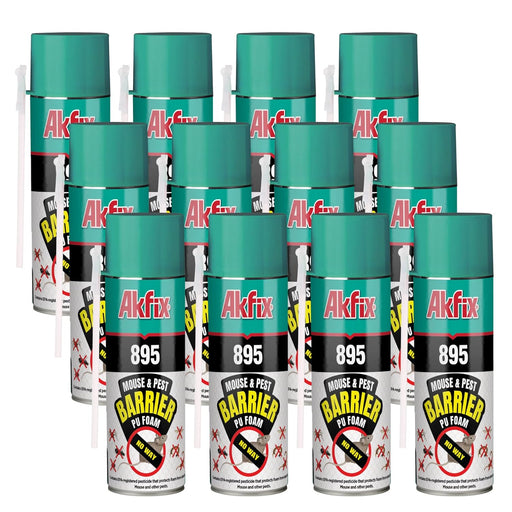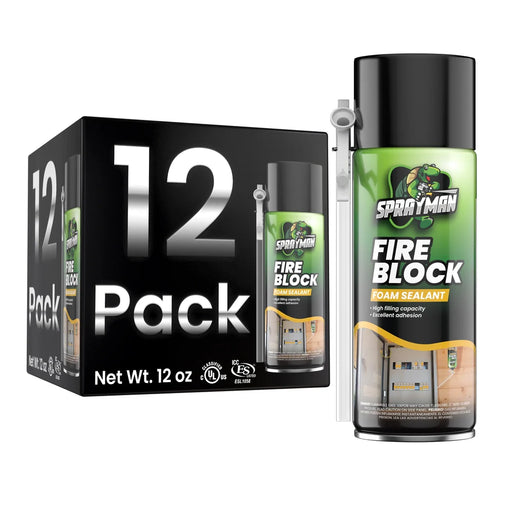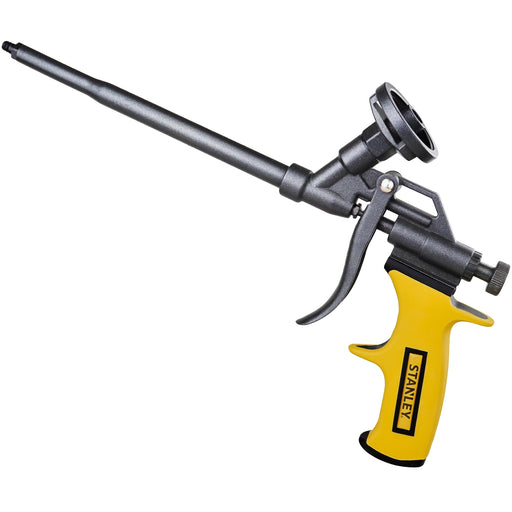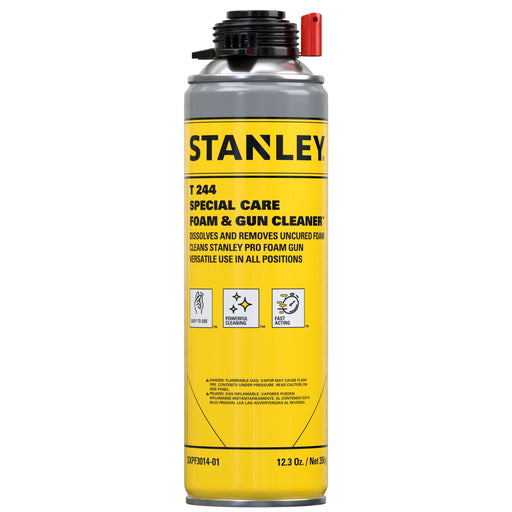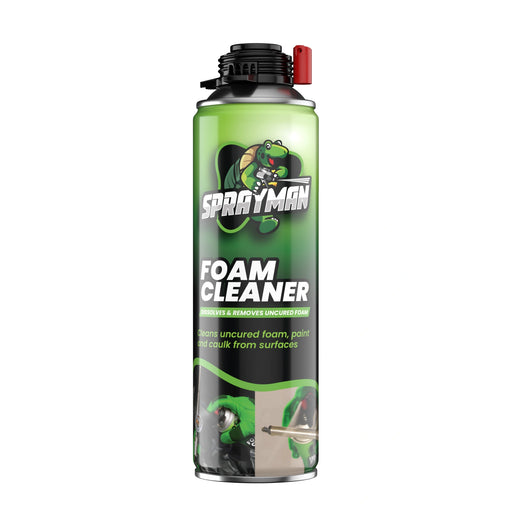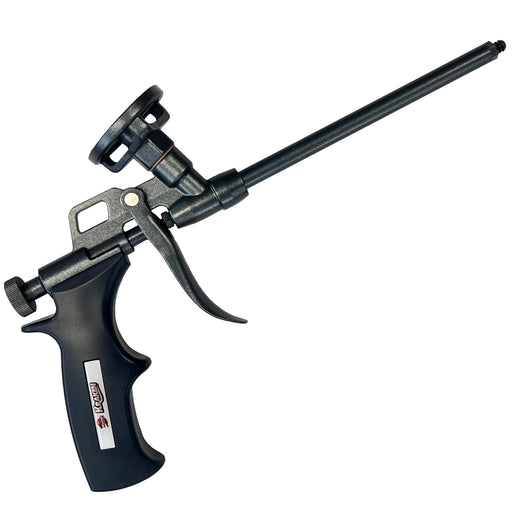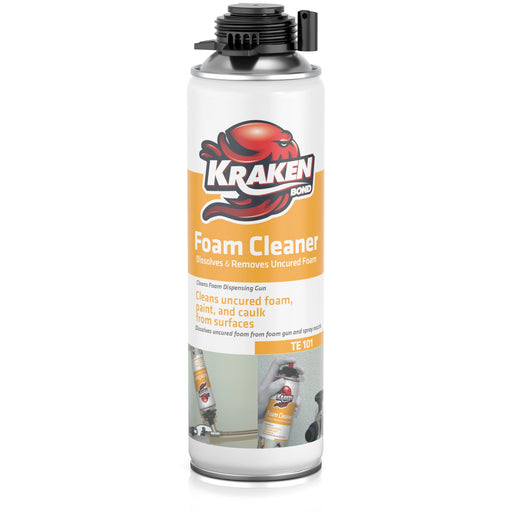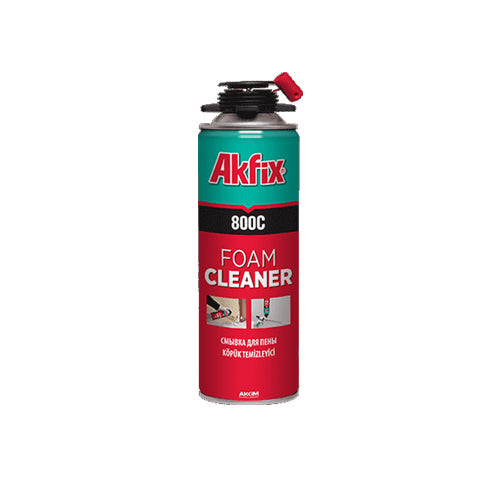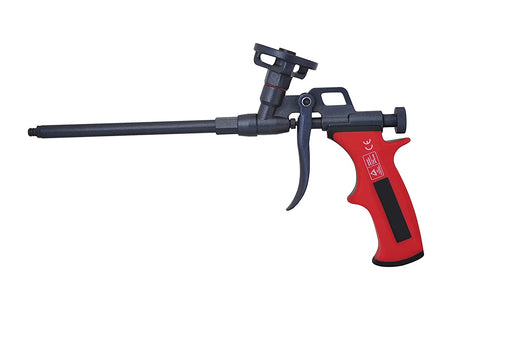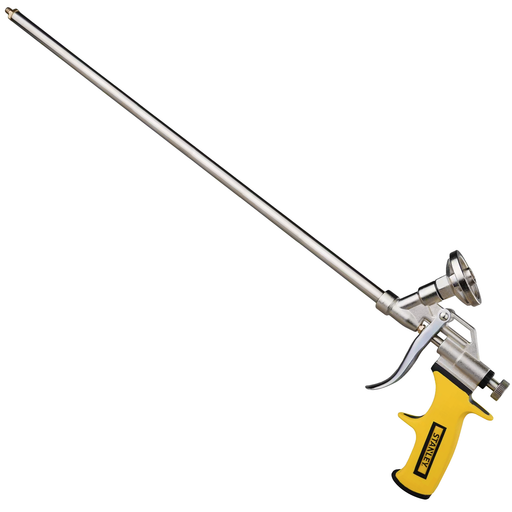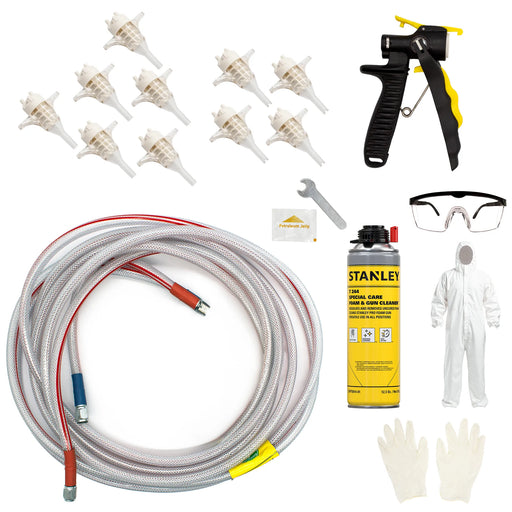High-Performance Foam Sealants for Sealing, Insulation, and Protection
Foam sealants are expanding polyurethane foams designed to seal gaps, stop air leaks, improve insulation, and protect buildings from moisture, pests, and drafts. Whether you're installing windows and doors, sealing pipe penetrations, or filling cracks in walls and framing, foam sealants offer long-lasting durability and strong adhesion to wood, concrete, metal, drywall, and most construction materials.
Explore our specialized subcategories to find the right foam for your project:
- Window & Door Foam
- Gaps & Cracks Foam
- Pest Safe Foam
- Fire Block Foam
Why Choose Foam Sealants?
Foam sealants deliver several important performance benefits, including:
- Superior air sealing for improved energy efficiency and reduced drafts
- Moisture resistance to help protect against mold, rot, and water intrusion
- Long-lasting durability suitable for both interior and exterior applications
- Fast and easy application, even in irregular gaps and hard-to-reach spaces
Types of Foam Sealants
Different types of foam sealants are formulated for specific applications, expansion rates, and safety requirements:
Window & Door Foam
Designed with low expansion to prevent frame distortion while ensuring an airtight and watertight seal around windows and doors.
Explore our full range of Window & Door Foam sealants here.
Gaps & Cracks Foam
High-expansion foam is ideal for filling vertical and horizontal gaps around pipes, outlets, wall penetrations, and general repair projects.
See all Gaps & Cracks Foam options for filling and sealing larger openings.
Pest Safe Foam
Formulated with pest-resistant additives to help prevent rodents and insects from entering through gaps and access points.
Browse our Pest Safe Foam products for effective pest-blocking protection.
Fire Block Foam
Orange-tinted foam developed to block air movement through wall cavities and penetrations, helping meet fire-blocking requirements.
View our Fire Block Foam solutions designed for compliant air-sealing in framing cavities. Always verify local building code requirements for fire-blocking applications.
Where Foam Sealants Are Used
Foam sealants are versatile and commonly used for:
- Sealing gaps around windows & doors
- Filling cracks in walls, attics, and crawl spaces
- Blocking pest entry points
- Air-sealing plumbing penetrations, HVAC lines, and electrical boxes
- Creating fire-blocking barriers in framing cavities
- Improving energy efficiency and reducing drafts
- Sound-dampening and insulation upgrades
How to Apply Foam Sealant
- Clean and dry the surface.
- Shake the can vigorously for 30–60 seconds.
- Attach the applicator or foam gun.
- Apply foam slowly; start filling from the deepest point.
- Allow the foam to expand and cure.
- Trim excess foam after curing.
- Paint or finish as needed.
Safety Tips When Using Foam Sealant
- Wear gloves, eye protection, and protective clothing.
- Use only in well-ventilated areas.
- Avoid contact with skin; uncured foam is difficult to remove.
- Keep away from open flames and heat sources.
- Store can upright and follow disposal instructions.
- Do not overfill gaps; allow room for expansion.
Frequently Asked Questions (FAQ)
What is spray foam sealant?
Spray foam sealant is an expanding polyurethane material used to fill gaps, block air infiltration, and improve insulation performance. It bonds strongly to most construction surfaces and provides a long-lasting, weather-resistant seal.
Is foam sealant waterproof?
Cured foam is highly water-resistant, making it suitable for basements, windows, rim joists, and exterior joints. However, it should not be used as a fully submerged waterproofing membrane.
What are the types of foam sealant?
Common types include low-expansion, high-expansion, latex-based, polyurethane-based, pest-resistant, and fire-block formulations.
How do I remove expanding foam sealant?
Uncured foam can be wiped away using acetone or foam cleaner. Once cured, it must be mechanically removed by cutting, scraping, or sanding.
What is the best foam sealant for filling large gaps?
Choose a high-expansion, high-yield foam specifically formulated for larger gaps and irregular voids, typically found in our Gaps & Cracks Foam category.
Top-rated foam sealants for windows and doors?
Look for low-expansion foams designed for framing applications. These products prevent bowing or distortion and create an airtight seal around windows and doors.
What’s the difference between foam sealant and caulk?
Foam sealant expands to fill wider gaps and offers insulation properties, while caulk is best for narrow seams and decorative joints. Use foam for structural gaps, caulk for fine cracks.
Is foam sealant safe to use indoors?
Yes, many formulations are low-VOC and safe for indoor air-sealing projects when used with adequate ventilation and proper protection.
What are the safety precautions for using foam sealant?
Wear gloves and goggles, avoid skin contact, ventilate the area, and keep away from open flames. Follow product-specific guidelines for application and disposal.
What’s the best foam sealant for my DIY project?
It depends on your task:
- Windows & doors: Use low-expansion formulas.
- Fire-rated areas: Choose fire-block foam.
- Pest entry points: Use pest-resistant foam.
- Large gaps or voids: Select high-expansion Gaps & Cracks foams.

